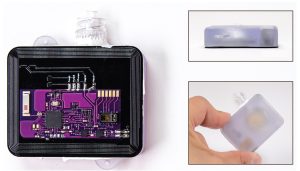Human stem cell model reveals molecular cues critical to neurovascular unit formation
Crucial bodily functions we depend on but don’t consciously think about—things like heart rate, blood flow, breathing and digestion—are regulated by the neurovascular unit. The neurovascular unit is made up of blood vessels and smooth muscles under the control of autonomic neurons. Yet how the nervous and vascular systems come together during development to coordinate these functions is not well understood. Using human embryonic stem cells, researchers at University of California, San Diego School of Medicine and Moores Cancer Center and Sanford-Burnham Medical Research Institute created a model that allows them to track cellular behavior during the earliest stages of human development in real-time. The model reveals, for the first time, how autonomic neurons and blood vessels come together to form the neurovascular unit.

Crucial bodily functions we depend on but don’t consciously think about—things like heart rate, blood flow, breathing and digestion—are regulated by the neurovascular unit. The neurovascular unit is made up of blood vessels and smooth muscles under the control of autonomic neurons. Yet how the nervous and vascular systems come together during development to coordinate these functions is not well understood. Using human embryonic stem cells, researchers at University of California, San Diego School of Medicine and Moores Cancer Center and Sanford-Burnham Medical Research Institute created a model that allows them to track cellular behavior during the earliest stages of human development in real-time. The model reveals, for the first time, how autonomic neurons and blood vessels come together to form the neurovascular unit.
SOURCE: Medical Xpress – Medical research News – Read entire story here.








